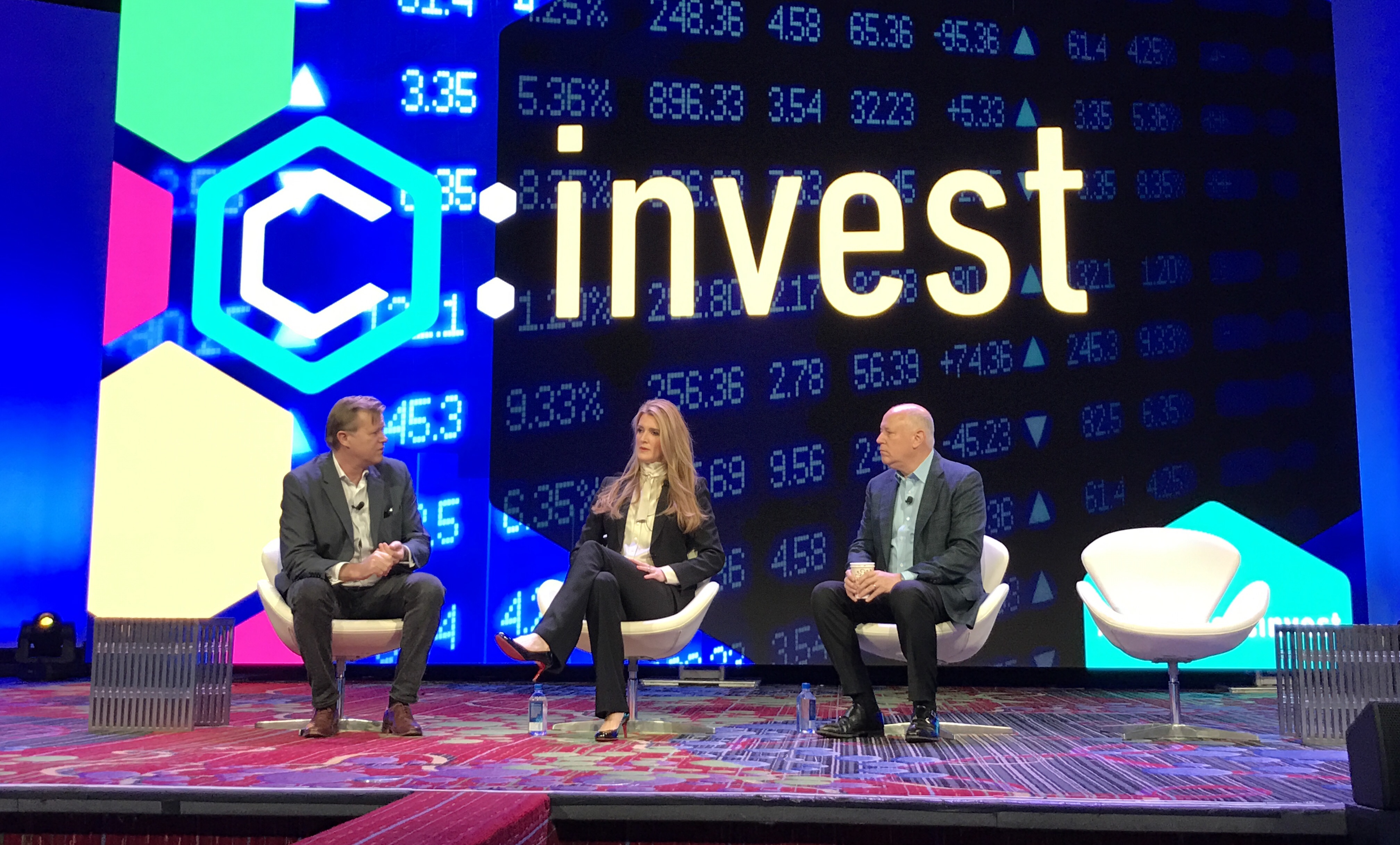Charles Cascarilla: PayPal Whisperer
Charles Cascarilla: PayPal Whisperer
“Regulatory stack as a service” is boring as hell until PayPal comes along.
That’s when the radical potential of being the cryptocurrency back-end for the biggest names in tech starts to appear a smidge more sexy.
This article is part of CoinDesk’s Most Influential 2020 – a list of impactful people in crypto chosen by readers and staff. The NFT of the art, by Olive Allen, is available for auction at The Nifty Gateway, with 50% of the sale going to charity.
Such was the case this year with Paxos – the firm founded in 2012 by Bitcoin OG Charles Cascarilla – when PayPal confirmed in October what CoinDesk first reported in June: That the fintech giant’s 350 million users would soon have easy access to the crypto markets.
The news pumped a bit of euphoria into what had been a quiet climb up the bitcoin price chart since the distant, $3,800 lows of March 2020. Suddenly bitcoin was trending, PayPal headlines were everywhere, the price was again flirting with $20,000.
And behind it all, quietly lurking in the well-regulated alphabet soup of the U.S. financial system, was Paxos and its months-old crypto brokerage service. The firm had snagged a huge fish, beating out rumored competitors like Coinbase and Bitstamp.
“They were gonna get involved even if Paxos didn’t exist,” Cascarilla said of PayPal in an interview earlier this month. “We’re not gonna overindulge here about what our role is. We presented a unique product that allowed PayPal to get in better than anyone else, which is why they’re using us.”

That product boils down to a turnkey system with all the crossed Ts and dotted Is of U.S. crypto compliance.
See, PayPal’s crypto offering is really “crypto lite.” When Joe PayPal User buys $50 of BTC he’s really buying an IOU that lives within the walled garden of his PayPal account. Joe can’t take that PayPal BTC and send it to an external wallet; its price gyrates inside PayPal until it’s cashed out in fiat. That’s just how it goes, for now.
On the back-end of every purchase, however, is a web of API calls that leads back to itBit, the institutional-grade crypto exchange launched by Paxos way back when bitcoin was in the hundreds. PayPal Joe holds the note in his account; Paxos holds the underlying crypto.
We’ve positioned ourselves to make this early-adopter to mainstream phase happen.
And according to CoinGecko data, PayPal has certainly been good for business.
Prior to the PayPal announcement on Oct. 21, daily volumes were consistently in the low millions. Once PayPal turned on the faucet to all U.S. users on Nov. 12, that number spiked to $20 million – touching as high as $81.9 million in 24-hour volume on Nov. 26, Thanksgiving Day.
Paxos wouldn’t disclose its revenue arrangement with PayPal but said similar deals are typically a combination of platform fees and transaction fees.
(Note: In addition to PayPal, Revolut US and institutional traders are the other pieces of the itBit volume pie.)
“You have this shift from early-adopter to mainstream that is happening. And there has to be some understanding that it’s gonna look different when you’ve got billions of people using it,” Cascarilla said. “It’s just not gonna look like it is now. That’s not necessarily a bad thing. If it stays early-adopter, then you’re never going to make a big change anyway.”
Cascarilla is in a good position to know.
‘Ironic’ roots
Paxos unofficially began in 2010 as Manhattan’s most improbable bitcoin mining farm.
“We were subleasing from Dexia, which is, ironically, a failed French bank,” Cascarilla said, pointing out the deal came with free electricity. “Our address was at 57th and Park. So we had, I’m certain, the most expensive address that you could have a server farm on, and we maxed out the floor plate with servers and ASICs and GPUs.”
At one point in the early 2010s, he added, the operation commanded up to 25% of Bitcoin’s network capacity.
The Cleveland-raised Cascarilla still had a foot in the world of traditional finance at the time, having co-founded a hedge fund in 2005 following a stint at Goldman Sachs. He was drawn to Bitcoin, like many others, by soldiering through the financial crisis of 2008.
“The technology made sense to us, because we had seen how the plumbing of the financial system had failed us and exacerbated the crisis,” he said.
Thus the decision to go from mining bitcoin to building new pipes.
Cascarilla and co-founder Rich Teo spun up itBit in the more crypto-friendly Singapore in 2013 and went about securing a trust company charter in the U.S. for Paxos. The crypto exchange was migrated back to New York and then seized on stablecoins – tokenized cash – as the thing the crypto market needed in the wake of Tether’s collateralization issues.
The dollar-backed and U.S. regulated Paxos Standard (PAX) stablecoin was launched in September 2018 and continued to be a primary focus of the firm until the following year. That’s when white-labeled stablecoins, first with Huobi and then Binance, were rolled out. Among other things, Paxos found itself as the provider of New York-based legitimacy.
It also became the first and only crypto firm to have a full account with the Depository Trust & Clearing Corp. (DTCC), even getting U.S. Securities and Exchange Commission approval to settle stock trades on a blockchain.
All of which is to say, the early bitcoiner and his 130 staffers in New York, Singapore and London have kept busy trying things.
One of those things just happened to land PayPal.
“What we’re here to do is be an infrastructural layer so anybody can join this ecosystem,” said Cascarilla, “because they just think it’s a good business opportunity, or because they believe this is the way the world is gonna go and they want to be part of a movement. For us, it doesn’t matter.”
That it can be both – tactical investment and ideological imperative, PayPal-friendly and self-custodial – is the “beauty” of Bitcoin itself, said Wences Casares, founder of Xapo and one of Cascarilla’s longtime friends.
“It’s very fitting that someone like him is helping PayPal bring this to millions of people that necessarily at first have to do it through custodial services,” Casares told CoinDesk in an interview. “Chad stands quite tall and quite alone as someone who can hold a conversation with a Bitcoin Core developer or he can turn around and have a conversation with Jamie Dimon or Steven Mnuchin. It’s very unique and we’re all in Bitcoin better for him doing that.”
What’s next
If PayPal can do it, what’s stopping Uber? Apple? Any global firm with a need for simplified payments?
They don’t even need to hold the tokenized cash; the stablecoins are just an API call away.
“I think that there will be something like a 10x-sized level of adoption that can happen in crypto next year,” Cascarilla said. “I think it’s large, large firms, in fairly rapid succession, launching crypto access for their customers.”
It may not meet bitcoin’s self-sovereign bona fides but it does put widespread usage in surprisingly close reach.
“We did this because we thought we could change the actual basis of financial services, both the plumbing and broadly in how people consume them,” Cascarilla said. “And I think we’re closer than ever now as an industry to reaching that goal.”










